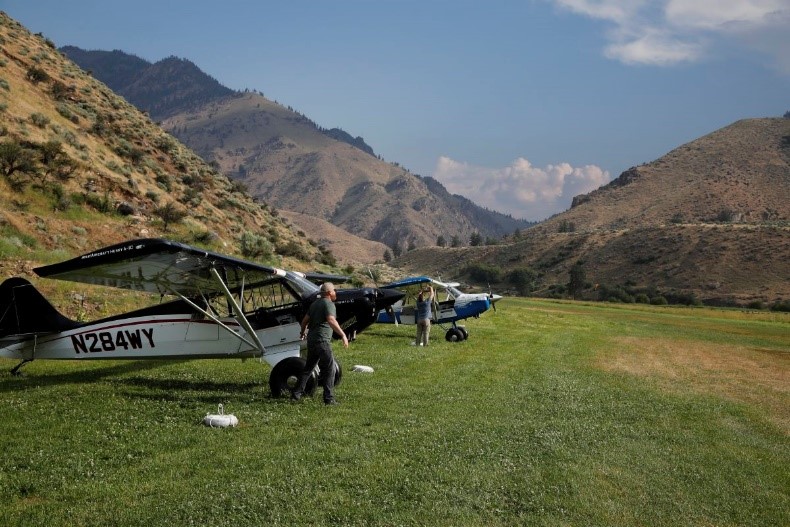Human Element
Safety Spotlight: Mountain Flying

Beyond unique terrain, different techniques, and challenging airfields, the nature of mountain flying can also create hazards regarding the human element of flight.
Whenever you fly in the mountains, don’t forget to file and activate a flight plan!
Hypoxia
Hypoxia—a lack of oxygen in the blood—can occur at higher altitudes in unpressurized aircraft. If you or your passengers experience hypoxic symptoms (impaired judgment, changes in behavior), use supplemental oxygen or descend to a lower altitude.
Tip: Buying a pulse oximeter and using it during flight at higher altitudes can help bring peace of mind and alert you to danger.
Hypoxia is insidious. Its onset can be subtle, and the onset rate can vary from day to day and from person to person. Intellectual impairment is its hallmark, and one of its most pronounced symptoms is a feeling of well-being.
Effects on Vision
Vision can diminish when flying above 5,000 feet msl at night and 10,000 feet msl during the day. Consider using supplemental oxygen when operating at or above these altitudes.
Dehydration
Pilots flying at higher altitudes are more susceptible to dehydration, which can lead to impaired judgment, fatigue, and other problems. Be sure to stay hydrated before and during flights: bring water and plan shorter legs if necessary.
Survival
Survival equipment could make the difference between life and death in the event of an unexpected landing or an accident. Here are a few basic items to include:
- First aid and survival kit
- Drinking water and food for several days
- Blankets and temporary shelter
- Wear or bring extra layers of warm clothing
- Signaling device
- Knife and small tree saw
- Wilderness survival guide
- Personal locator beacon
- Cell phone and handheld transceiver with extra batteries
Whenever you fly in the mountains, don’t forget to file and activate a flight plan! This will significantly help search and rescue efforts.